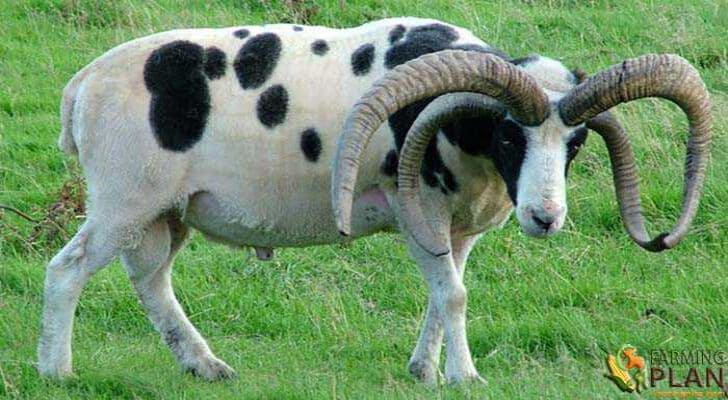Historians suggest that the origin of the Jacob sheep breed is from the Nordic countries. Subsequently, this breed was export to Great Britain. At first, this race had the name of Spanish sheep, although it had no relation with Spain. While some historians say that there were similar sheep in China and Persia about 2000 years BC. Another historical piece where this breed was found was in England paintings from the late 18th century showing Jacob’s sheep today.
It was not until the year 1969 when the association of Jacobs sheep was established. And it remained until today, today has around 750 members. Another country where this species was kept was in Germany, at least 25 farmers were registered in late 2005 with about 240 sheep and 40 goats breeding studbooks.

And in 1996, the Association of Sheep Breeders Jacob was founded in Germany, which meets annually to exchange information. The name of this breed is derived from the two sets of horns protruding from the head of the sheep. You May Also Like To Read Katahdin Sheep.
Characteristics of Jacob Sheep
The Jacob sheep are impressive especially for their physical appearance. There are two characteristics that make them different from other breeds, horns and stained skin. What makes them so much more distinctive in goats, which gives they have an imposing look. Usually, the coat of this species is white, brown or black.
Although Jacobs appears to be a white sheep with black spots, they are actually black with white markings. Sometimes black appears a brown-gray color. Through extensive mestizaje, some sheep may appear all black or with very few white spots. After the females of this species give birth, you can see if the young are lambs with two or four horns.
Although the horns of the newborn lamb are still very soft and fragile. This over time will become more stable and strong. Some have only two horns or even 6, but 4 is more common in rams. Sheep usually have zero or 2 small horns, irregularly shaped. Females that are growing in the E.E.U.U. are usually born without horns.
But in other parts of the world horns can grow in the form of mouflon. This species is large, usually, the sheep weigh from 55 to 80 kilos and sheep from 45 to 55 kilos. You May Also Like To Read Gute Sheep.
Animal Development
The males have developed fully after two or three years. The warmth of Jacob’s sheep is seasonal, and the initial record is possible, with seven or nine months. While the first birth usually brings a single lamb, twins and triplets are not extraordinary afterward. Jacob’s sheep have a strong maternal instinct. Jacob sheep are a frugal and robust breed. If the land is heavy, obesity and reaches a weight that is undesirable for sheep.
Food
Jacob sheep can ensure adequate nutrition with minimal or minimal supplementation, even when soil conditions are not optimal. The fodder must be of good quality.
Usage
Jacob Sheep is a multipurpose race. And the farmers produce it for their excellent meat and to produce their skin. In addition, the wool that produces this race is of excellent quality and takes advantage of its commercialization. The wool is very suitable for spinning. In addition, dyeing and wool felt is suitable. Many years ago breeders used this breed as guardians. They have tender and very tasty meat.
Special Feature
Seeing sheep with horns is not uncommon. Both sexes may have it in some breeds, and in most cases, it is the males that carry them. But to see females of this species with four horns is not so habitual. Nevertheless, there are several primitive races that present display the presence of more horns of the two habitual ones. You May Also Like To Read Suffolk Sheep.
This species is inside the animals in danger of extinction, nevertheless, there are 3.000 individuals of this species. Jacob’s four-horn sheep are, perhaps, the most easily identifiable in the exotic world. Another additional characteristic of this species is that it is highly resistant to disease.
And in spite of its strength, it is due to protect from sudden changes in the environment and cold climates. Historians suggest that the true origin of this breed is unknown. However, the documentation suggests that the sheep ran aground during a wreck on the Spanish coasts after the attempt of England invasion by the Spanish Navy.
These sheep were able to cross with the native flocks of the north of England and Scotland producing the breed that is known today. Usually, in fights that occur between males, they can lose a horn.
Conclusion
If you’re considering adding a Jacob to your farm, we hope this guide has helped inform and prepare you. With its unique combination of dark wool and four horns, the Jacob is an easy way to add diversity to any flock. Whether for meat or milk production, it’s hard not to admire these intelligent sheep that offer something different from other breeds on the market!
As A Reference: Wikipedia


